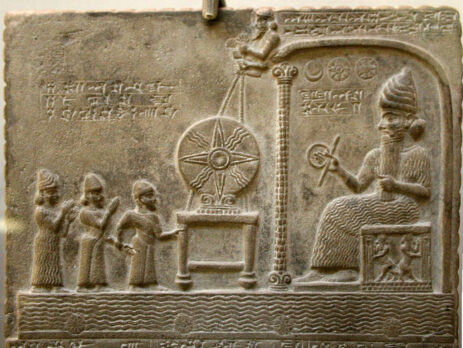The Influence of Ancient Near Eastern Cultures on the Bible
The Bible, revered as a sacred text by billions of people around the world, holds a rich tapestry of stories, teachings, and moral principles. While it is a unique religious document in its own right, it is also deeply intertwined with the cultural and literary traditions of the ancient Near East. The civilizations that flourished in this region, including the Sumerians, Babylonians, Assyrians, and Canaanites, had a profound influence on the development and shaping of the biblical narratives. Exploring the connections between the Bible and these ancient cultures enhances our understanding of the historical, social, and theological contexts in which the scriptures emerged.
One of the earliest and most significant influences on the Bible is found in the ancient Sumerian civilization. The Epic of Gilgamesh, a famous Sumerian literary work, shares striking similarities with the story of Noah’s Ark in the Book of Genesis. Both narratives depict a global flood, the construction of a vessel to save humanity and animals, and the sending forth of birds to determine if land has reemerged. The parallels suggest a shared cultural heritage and the borrowing or adaptation of stories across civilizations. Recognizing the influence of Sumerian literature on the biblical flood narrative highlights the interconnectedness of ancient cultures and their collective pursuit of understanding and conveying profound human experiences.
The Babylonian civilization, renowned for its advanced astronomical knowledge and legal codes, also left an indelible mark on the Bible. The Babylonian exile of the Israelites, during which they were held captive in Babylon, played a crucial role in shaping their identity and worldview. The stories of Daniel, Esther, and the fall of Babylon in the Book of Daniel and the Book of Isaiah reflect this period of exile and the blending of Israelite and Babylonian cultures. Additionally, the influence of Babylonian creation myths, such as the Enuma Elish, can be seen in the biblical creation account in the Book of Genesis. The concept of a divine creator fashioning the world out of chaos and the notion of humans being made in the image of God find resonance in both traditions.
The Assyrian Empire, known for its military might and brutal conquests, also had a significant impact on the Bible. The Assyrians are mentioned throughout the Old Testament as conquerors and oppressors of the Israelites. The prophecies of Nahum and Jonah, for example, reflect the Assyrian threat and their subsequent downfall. Moreover, the Assyrian art and architecture depicted in reliefs and inscriptions have provided valuable insights into the cultural and visual milieu of the biblical world. The grandeur of Assyrian palaces and the portrayal of kings and gods in these artworks offer a backdrop against which to understand the political and religious dynamics of the time.
Canaanite culture, prevalent in the region before the Israelites’ arrival, also exerted influence on the Bible. The Canaanite pantheon of gods and goddesses, such as Baal and Asherah, are referenced in the Old Testament as objects of worship by the Israelites and as deities to be forsaken. The book of Psalms, in particular, incorporates elements of Canaanite poetry and hymnody, demonstrating the cultural exchange and adaptation that occurred during the Israelites’ settlement in Canaan.
These examples merely scratch the surface of the intricate web of influences between the Bible and the ancient Near Eastern cultures. By studying these connections, scholars gain a deeper appreciation for the historical and cultural context in which the biblical texts were produced. Rather than existing in isolation, the Bible emerges as a complex tapestry woven from a multitude of cultural threads. This understanding does not diminish the sacredness of the scriptures but rather enriches our comprehension of their origins and the diverse tapestry of human experiences that contributed to their formation.
It is important to note that recognizing the influence of ancient Near Eastern cultures on the Bible does not diminish its religious significance or authenticity. Instead, it underscores the dynamic nature of religious and cultural development, where ideas, stories, and practices are shared, adapted, and reinterpreted across civilizations. The biblical authors, inspired by their encounters with other cultures, synthesized these influences within their own religious framework, conveying profound spiritual truths that resonated with their own community.
Understanding the influence of ancient Near Eastern cultures on the Bible also fosters intercultural dialogue and appreciation. It reminds us that human civilizations have been interconnected since ancient times, with shared stories, motifs, and values that transcend geographic and cultural boundaries. Recognizing these connections can foster a spirit of respect, empathy, and mutual learning among people of different faiths and cultural backgrounds.
Moreover, studying the ancient Near Eastern influences on the Bible invites us to critically engage with the scriptures. It encourages us to delve deeper into the historical context, literary traditions, and theological implications of the texts. By understanding the cultural milieu in which the Bible emerged, we gain a more nuanced understanding of its messages and teachings, enabling us to interpret and apply them in a meaningful way to our contemporary lives.
In conclusion,
the influence of ancient Near Eastern cultures on the Bible is a testament to the vibrant and interconnected nature of human civilizations. The stories, themes, and cultural motifs shared among these ancient cultures shaped the development of the biblical narratives, adding layers of meaning and depth to the scriptures. Exploring these connections enriches our understanding of the historical, social, and theological contexts in which the Bible was formed. It invites us to engage in intercultural dialogue and deepens our appreciation for the diverse tapestry of human experiences that have contributed to the formation of the sacred texts. By acknowledging these influences, we gain a richer understanding of the Bible and its profound impact on faith, culture, and human history.

